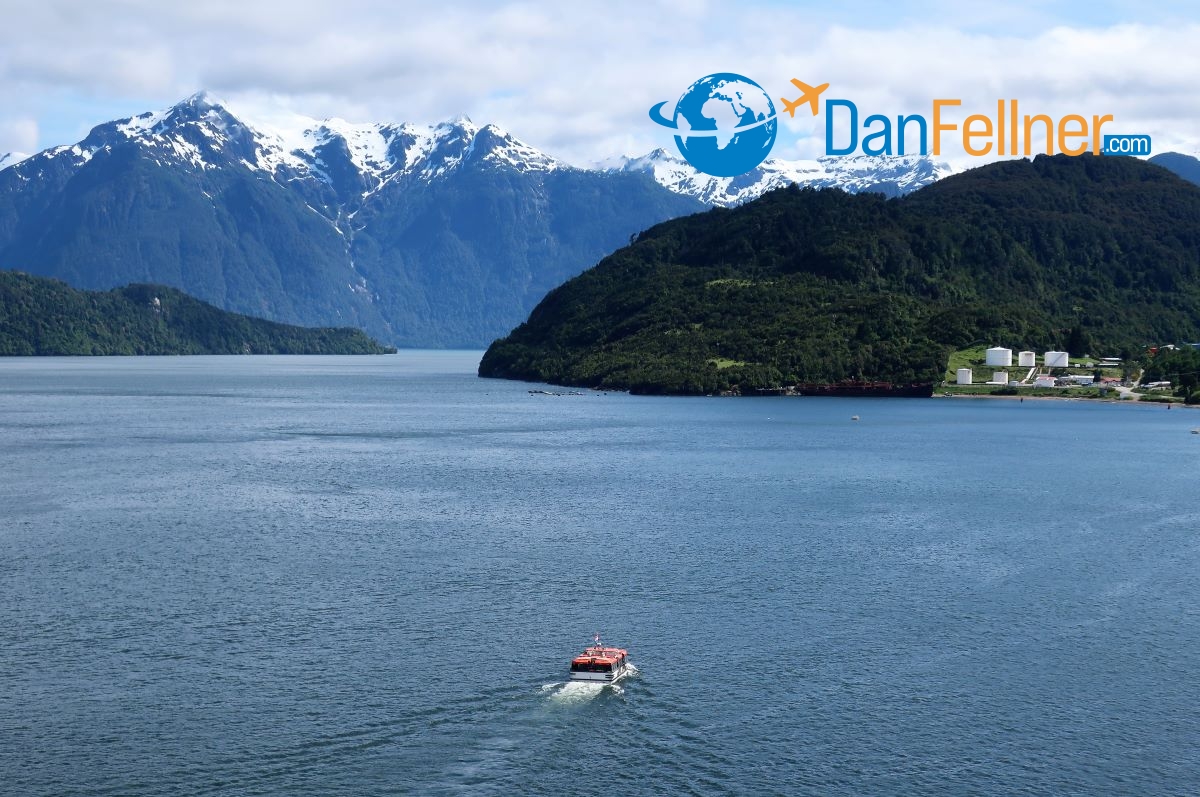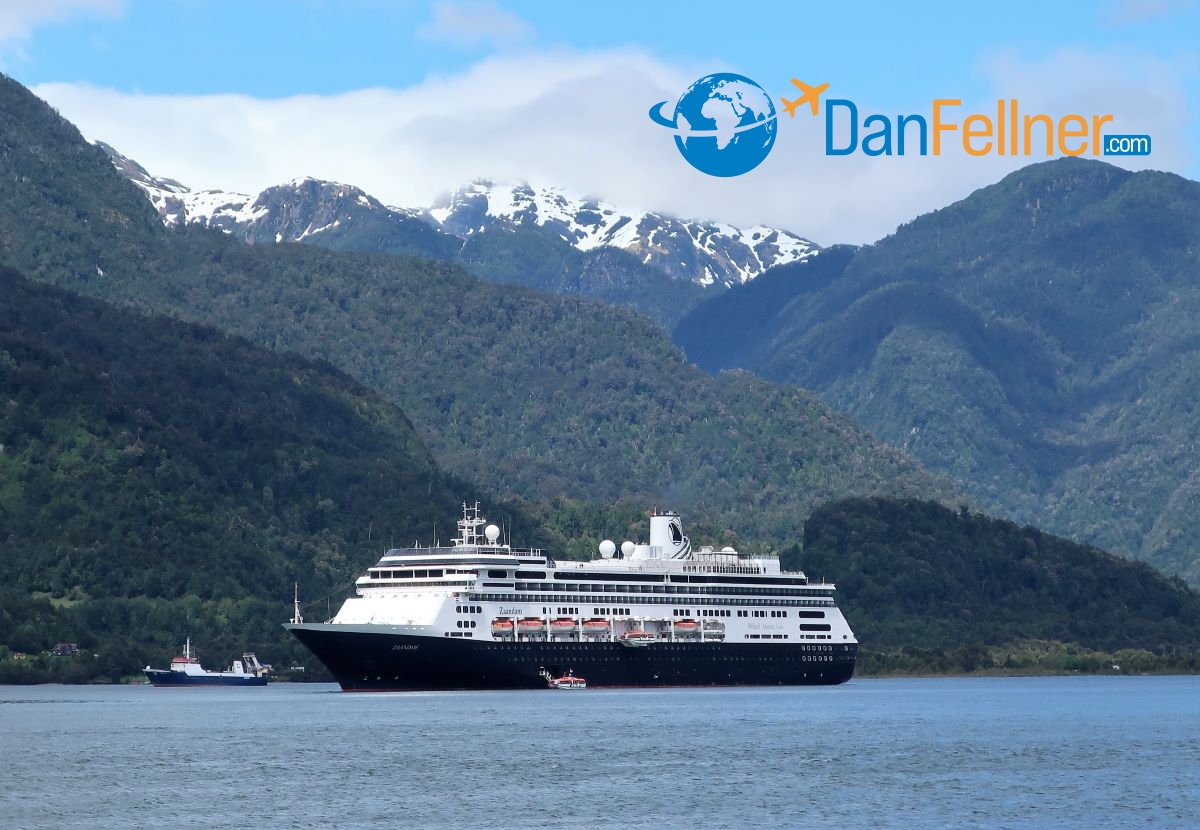Remote Argentine city offers spectacular scenery at tip of South America
The Arizona Republic/USA Today.com — January 12, 2020
USHUAIA, Argentina – If the Flat Earth Society was looking for a place to host its next international convention, they couldn’t pick a more fitting location than this city near the southernmost tip of South America.

Ushuaia, Argentina, arguably the southernmost city in the world.
Ushuaia (typically pronounced oosh-why-yah), a windy outpost of about 85,000 residents in the Andes mountain range, proudly bills itself as “fin del mundo,” the end of the world.
Visitors to this city on the Tierra del Fuego (land of fire) archipelago will find signage and souvenirs for sale throughout Ushuaia boasting of the city’s location on the edge of the planet’s precipice. The region’s most popular attractions include the “end of the world train,” the “end of the world museum,” and the “end of the world lighthouse.”
Sorry, flat-earthers. As hard as I looked, there was no giant cliff or abyss anywhere near Ushuaia that would plunge me off terra firma into outer space.

Ushuaia bills itself as the “fin del mundo” — end of the world.
But I did find one of the most scenic cities found anywhere on the planet – north or south. Ushuaia, which has become a popular launching point for cruises to Antarctica, has a charming and easily walkable downtown, a fascinating history as a penal colony, and the spectacular Tierra del Fuego National Park, just a 30-minute drive from the city center.
At 54.8 degrees latitude south, Ushuaia is about the same distance – 2,400 miles — to the South Pole is it is to the northern border of Argentina.
Getting to Ushuaia is more than half the fun. While there are a few expensive and time-consuming flights into the city’s small international airport, the most enjoyable way to reach Ushuaia is by cruise ship. I sailed on the Holland America Zaandam, which was packed to capacity with 1,360 passengers from 41 different countries. Only about a third of my fellow passengers were Americans.

The fjords near Puerto Chacabuco in the Patagonia region of southern Chile.
We started the cruise on the Pacific Ocean port of San Antonio, Chile – about a 90-minute drive from the country’s capital city of Santiago – and sailed south. We cruised through the Chilean fjords and explored Patagonia, one of the most sparsely populated regions in the world.
In Patagonia, which encompasses parts of both southern Chile and Argentina, sheep outnumber people by a ratio of seven-to-one. Along the narrow straits and fjords, we passed active volcanos, glaciers, snow-capped mountains, fields full of colorful wildflowers and several shipwrecks dating back decades.

One of six glaciers in the Beagle Channel near Ushuaia.
After stops in little-known Chilean ports such as Puerto Montt and Puerto Chacabuco, we sailed into the Strait of Magellan, discovered by the Portuguese explorer in 1520. Farther south, we reached the Beagle Channel, famous for its “Glacier Alley,” a series of six glaciers. Five of the six glaciers are named after the European countries whose explorers first mapped the region in the 19th century.
The Zaandam was able to sail up-close to the glaciers, giving us stunning views of the blueish ice and waterfalls cascading into the sea from the Andes above.

The flag of Argentina flies in Tierra del Fuego National Park near Ushuaia.
Later that morning, we reached Ushuaia on the island of Tierra del Fuego, which is divided almost evenly between Chile and Argentina. Most of the Zaandam’s passengers took a tour to the Tierra del Fuego National Park, on the Argentine side of the island. Some went by train – the famous “train at the end of the world.” Yes, it’s the southernmost functioning train in the world.
The narrow-gauge steam railway originally was built in the late 19th century to serve Ushuaia’s prison, where some of Argentina’s most hardened criminals were sent due to the city’s remote location. The prison was closed in 1947 and converted into a naval base. The train was rebuilt in the 1990s and now transports tourists to the national park.

Wild lupins flourish in the Patagonia region of southern Chile.
I took the bus – it was cheaper. On the drive, we passed the world’s southernmost golf course before reaching the park, where I explored its many streams, lakes, hiking trails, wildlife and mountain views.
In addition to billing itself as the end of the world, Ushuaia also claims to be the southernmost city in the world. That’s debatable. Puerto Williams, a nearby town in Chile with about 3,000 residents, is indisputably farther south, by about 10 miles. The question is whether Puerto Williams is truly a “city,” a designation it recently received from the Chilean government.

The Holland America Zaandam anchored in the fjords near Puerto Chacabuco, Chile.
I asked Adrian Ayala, our Argentine guide in Ushuaia, about which place can rightfully make the claim. He scoffed at Puerto Williams’ assertion that it – not Ushuaia – is the world’s southernmost city.
“It’s not fair,” said Ayala. “To be an official city, you need to have at least 5,000 inhabitants, according to international law.”

Downtown Ushuaia, Argentina. The city is home to about 85,000 people.
None of the Zaandam’s passengers seemed overly concerned about the controversy. Many of us stood in line at the Ushuaia Tourist Information Office to receive a certificate recognizing our visit to “the southernmost city in the world to live an unforgettable experience.”
Afterward, with a stiff southerly wind making temperatures in the upper 40s feel much colder, I walked back to the ship. The next morning, we awoke at 5:30 a.m. as the Zaandam sailed past Cape Horn at the southern tip of the continent, where the Pacific and Atlantic oceans collide.

Cape Horn, where the Pacific and Atlantic oceans meet at the southern tip of South America. A monument on the right of the cape is dedicated to the thousands of sailors who lost their lives in the area.
Discovered by a Dutch explorer in 1616, Cape Horn used to be a major shipping route until the Panama Canal was built in 1914. It was known for its treacherous waters – and many shipwrecks. A small monument was visible on the cape dedicated to the estimated 10,000 seamen who lost their lives in the area. During our cruise, we had unusually calm seas and the Zaandam had no difficulty rounding the cape.
Once in the Atlantic, we stopped in the Falklands Islands, a British overseas territory where we had a chance to observe several species of penguins in their natural habitats. I chose to visit a colony of orange-beaked Gentoo penguins. After leaving the Falklands, we cruised back north to warmer weather and ended the trip with stops in Montevideo, Uruguay, and Buenos Aires, Argentina.

A colony of Gentoo penguins on the remote Falkland Islands.
Parkas and gloves were replaced with tee-shirts and shorts and the retractable roof over the Zaandam’s swimming pool was reopened. The change in climate from warm to frigid and back to warm again made it a tricky trip for which to pack. The cruising season for Patagonia spans from October-March, the South-American spring and summer.
In two weeks, we had circumnavigated the southern portion of the continent. We never quite reached the end of the world, but sure had a fun adventure trying to find it.

View of the Calbuco volcano, which last erupted in 2015, as it peeks over the clouds in the Chilean port of Puerto Montt.
© 2020 Dan Fellner



